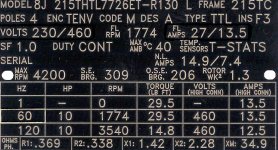It is an exam that I am writing based on a Motor Nameplate image I found where I have the students figure the Minimum ampacity of the Branch Circuit conductors and minimum size THWN copper conductors, Maximum rating of overloads using separate overload devices, Max rating of OCPD using Dual Element fuses, and both the minimum ampacity of separate disconnect and the minimum HP rating of the switch. All I give them is a picture of the nameplate and the voltage they are using and they figure the rest out. However while figuring the HP rating of the switch I saw that 430.251(B) is only for Design B, C, and D motors and this one is a design A which prompted this question because I cant answer it myself.


